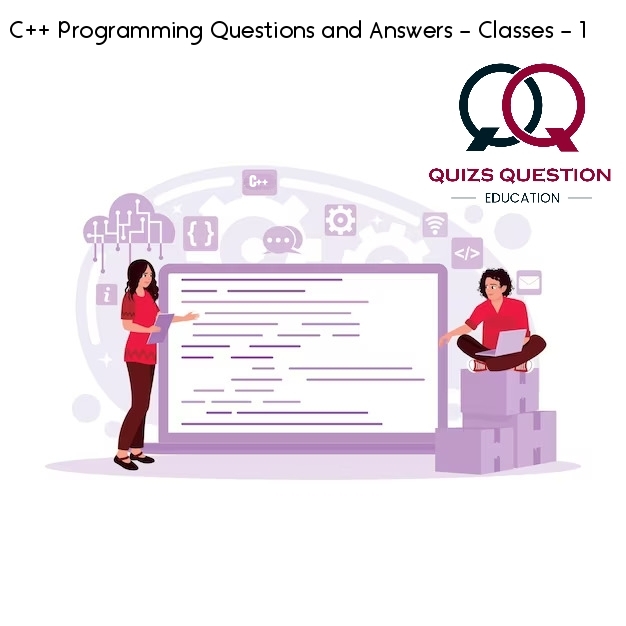C++ Multiple Choice Questions focuses on “Classes”. One shall practice these questions to improve their C++ programming skills needed for various interviews campus interviews, walk-in interviews, placements, entrance exams and other competitive exams. These questions can be attempted by anyone focusing on learning C++ programming language. They can be a beginner, fresher, engineering graduate or an experienced IT professional. Our C++ questions comes with the detailed explanation of the answers which helps in better understanding of C++ concepts.
C++ Questions & Answers focuses on “Classes” along with answers, explanations and/or solutions:
Q 1. What does a class in C++ holds?
A. data
B. functions
C. arrays
D. both data & functions
Show Answer
Answer:-D. both data & functionsExplanation
The classes in C++ encapsulates(i.e. put together) all the data and functions related to them for manipulation.Q 2. How many specifiers are present in access specifiers in class?
A. 1
B. 2
C. 3
D. 4
Show Answer
Answer:-C. 3Explanation
There are three types of access specifiers. They are public, protected and private.Q 3. Which is used to define the member of a class externally?
A. :
B. ::
C. #
D. !!$
Show Answer
Answer:-B. ::Explanation
:: operator is used to define the body of any class function outside the class.Q 4. Which other keywords are also used to declare the class other than class?
A. struct
B. union
C. object
D. both struct & union
Show Answer
Answer:-D. both struct & unionExplanation
Struct and union take the same definition of class but differs in the access techniques.Q 5. Which of the following is a valid class declaration?
A. class A { int x; };
B. class B { }
C. public class A { }
D. object A { int x; };
Show Answer
Answer:-A. class A { int x; };Explanation
A class declaration terminates with semicolon and starts with class keyword. only option (a) follows these rules therefore class A { int x; }; is correct.Q 6. The data members and functions of a class in C++ are by default ____________
A. protected
B. public
C. private
D. public & protected
Show Answer
Answer:-C.privateExplanation
By default all the data members and member functions of class are private.Q 7. Constructors are used to ____________
A. delete the objects
B. construct the data members
C. both initialize the objects & construct the data members
D. initialize the objects
Show Answer
Answer:-D. initialize the objectsExplanation
Once the object is declared means, the constructor are also declared by default.Q 8. When struct is used instead of the keyword class means, what will happen in the program?
A. access is private by default
B. access is public by default
C. access is protected by default
D. access is denied
Show Answer
Answer:-B. access is public by defaultExplanation
For structures, by default all the data members and member functions are public.Q 9. What will be the output of the following C++ code?
#include <iostream>
using namespace std;
class rect
{
int x, y;
public:
void val (int, int);
int area ()
{
return (x * y);
}
};
void rect::val (int a, int b)
{
x = a;
y = b;
}
int main ()
{
rect rect;
rect.val (3, 4);
cout << “rect area: ” << rect.area();
return 0;
}
A. rect area: 24
B. rect area: 12
C. compile error because rect is as used as class name and variable name in line #20
D. rect area: 56
Show Answer
Answer:-B. rect area: 12Explanation
In this program, we are calculating the area of rectangle based on given values. Output: $ g++ class.cpp $ a.out rect area: 12Q 10. What will be the output of the following C++ code?
#include <iostream>
using namespace std;
class CDummy
{
public:
int isitme (CDummy& param);
};
int CDummy::isitme (CDummy& param)
{
if (¶m == this)
return true;
else
return false;
}
int main ()
{
CDummy a;
CDummy *b = &a;
if (b->isitme(a))
{
cout << “execute”;
}
else
{
cout<<“not execute”;
}
return 0;
}
A. execute
B. not execute
C. error
D. both execute & not execute


Leave a Reply